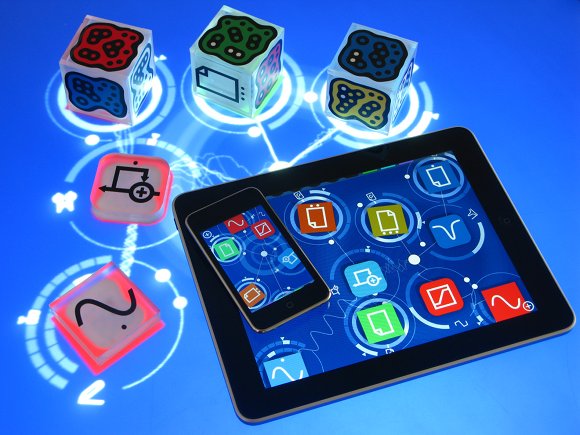ReacTable Mobile has arrived for iOS mobile devices – even handhelds – bringing the visual, modular sound-making environment to the masses. Apart from building your own interactive musical table, the only way to get ReacTable’s software previously was to spend some EUR9700 – and get on a waiting list. Now, any Apple mobile device will do the trick.
The ReacTable certainly is intuitive and fun, and I imagine this could appeal to people new to music performance, as well as satisfying some long-time ReacTable fans. There’s also sample import, so you can really use this in your own performances and make it your own. Features:

One app for iPhone, iPad, and iPod touch
Accelerometer and mic input
Import your own samples and loops
20 virtual objects
Session sharing with others
Full details:
http://www.reactable.com/products/mobile/
I’ve been talking with the ReacTable crew, so hope to cover this in more detail soon. In the meantime, I’m back to playing a mobile game called “shake your jetlag,” and thanks to everyone who sent this in!
Addendum: At least one person on Twitter (Elliott Fienberg) points out the one disadvantage of this is that the original ReacTable is a tangible interface – physical objects you can move with your hands. And that’s worth saying; there’s something rather significant missing in the iOS translation. The iPad et al are undifferentiated glass surfaces, intuitive to use but lacking in physical feedback. I can certainly see a place for both approaches. It’s also possible look at the same question from a different angle. Multitouch, once an exotic technology, is now a commodity, shippings on millions (perhaps, soon, billions) of devices. I wonder what form the tangible future imagined by ReacTable might someday take, and indeed, if it might re-emerge in more economical form.
In the meantime, as you’ll read in comments, ReacTable works surprisingly well as a multi-touch interface, even if it was originally conceived for objects. You’ll likely be happier with the iPad’s larger surface area, and you’ll want a current-generation device for its greater processing power, based on feedback in comments. I hope to offer more a complete review after some tests on devices.